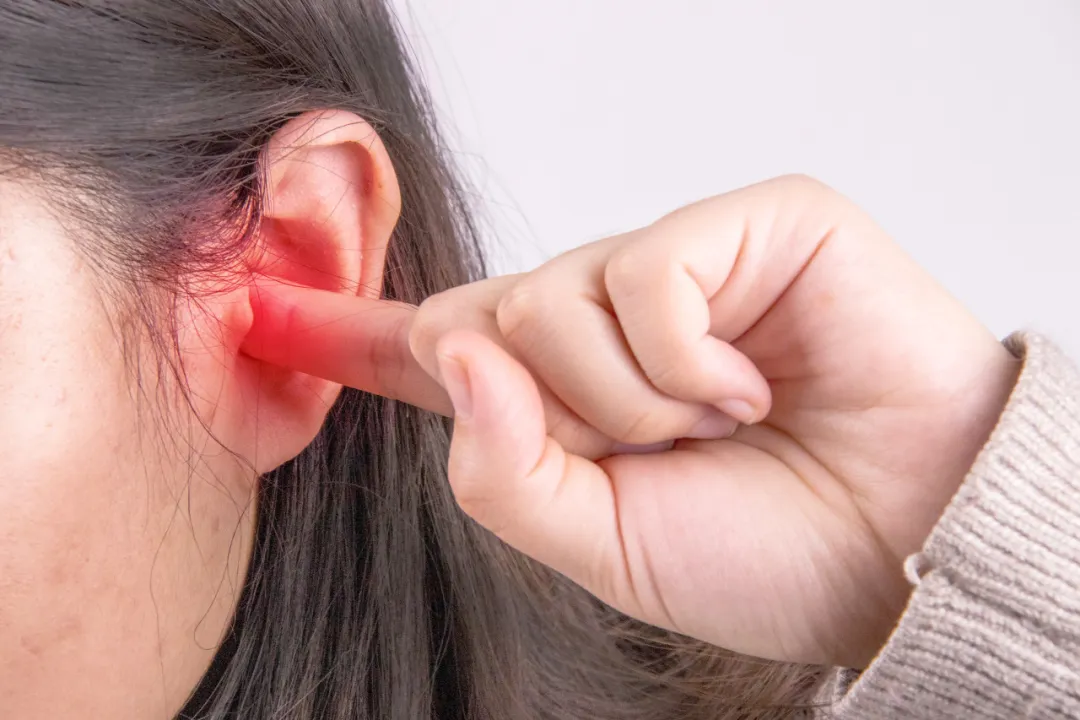On a scorching summer day, plunging into a cool pool, splashing water, and escaping the heat feels like pure bliss.
But when you step ashore, satisfied, shaking off wet hair, a dull ache might creep into your ears. It might even feel like a damp cotton ball is lodged inside, muffling your hearing – this summer nuisance could be caused by an "uninvited guest" in your ears.
01
Plugged by "Water-Swelled" Cerumen
Cerumen, commonly known as earwax. Don't disdain it! It protects the skin of the external auditory canal, prevents sand and water from entering, uses its unique odor to repel small insects, and filters and buffers loud noises. It truly acts as a natural barrier for the ear canal.
However, when you enter the pool, cerumen encounters a major problem – water! Dry cerumen meeting water is like a compressed sponge soaking in liquid; it swells in volume, blocking the ear canal and causing cerumen impaction. This leads to ear fullness, muffled hearing (as if through a film of water), echoing of your own voice, and sometimes accompanied by a dull ache.
Q: What to do?
Absolutely DO NOT try to remove it yourself with cotton swabs or ear picks.
DO NOT get your ears cleaned casually outside. Unprofessional attempts can push the swollen cerumen deeper and pack it tighter. They can even cause micro-tears in the ear canal skin, damaging its barrier function, allowing bacteria or fungi to grow, and potentially causing otitis externa (swimmer's ear).
The correct approach is to seek help from a professional ENT (Ear, Nose, and Throat) doctor, who can safely remove it using specialized tools.
 02
"Opportunistic" Otitis Externa (Swimmer's Ear)
02
"Opportunistic" Otitis Externa (Swimmer's Ear)
Bacterial or fungal infections take center stage! Don't assume only lake or seawater is risky. Even seemingly clear pool water, if inadequately disinfected or improperly maintained, can harbor bacteria or fungi. When water enters your ears during swimming and isn't promptly drained, the warm, moist ear canal becomes a breeding ground for bacteria, triggering otitis externa.
Initially, it might just be an itchy ear. But it soon progresses to varying degrees of redness and swelling in the external auditory canal, accompanied by ear pain. This pain worsens significantly when pulling the auricle (outer ear) or pressing the tragus (the small bump in front of the ear canal). In severe cases, pus may even drain from the ear.
Q: What to do?
For otitis externa, doctors typically prescribe antibiotic or antifungal eardrops, sometimes combined with oral medication depending on the situation.
Prevention is also key:
After swimming, ensure your ears dry thoroughly. The classic technique is tilting your head and hopping on one foot, letting gravity help drain water from the ear canal. You can also gently dab the outer ear opening with a clean, soft towel or cotton pad.
03
"Stealthy Trouble": Otitis Media
Generally, when the eardrum (tympanic membrane) is intact, water entering the ear stays in the external canal and cannot reach the middle ear to cause otitis media.
However, there are exceptions:
History of otitis media with a perforated eardrum: A damaged barrier allows water to reach the middle ear. Bacteria in the water can then cause an infection within the middle ear cavity.
Upper respiratory infection (like a cold): Accidentally inhaling water through the nose while swimming allows bacteria to travel up the Eustachian tube into the middle ear cavity, leading to otitis media. Symptoms can include hearing loss, fever, and significant ear fullness or pain.
Children with enlarged adenoids require extra caution!
First, enlarged adenoids themselves are often associated with otitis media. They can directly block the opening of the Eustachian tube in the nasopharynx. This prevents normal airflow in the middle ear cavity, creating negative pressure. To compensate, blood vessels in the middle ear mucosa dilate, fluid leaks out and accumulates, eventually leading to secretory otitis media (glue ear).
If bacteria then invade, this fluid can become infected, developing into acute suppurative otitis media.
Adenoids are lymphoid tissue. When inflamed, they can become a reservoir for bacteria. Pathogens and inflammatory secretions from the nasopharynx can travel backward (retrograde) up the Eustachian tube into the middle ear, further increasing infection risk.
Crucially, a child's Eustachian tube is shorter, wider, and more horizontal than an adult's, making it much easier for bacteria to "travel upstream" and cause otitis media.
Q: What to do?
Treatment for otitis media involves oral antibiotics, nasal sprays, etc., as determined by the doctor.
For children with enlarged adenoids, it is essential to promptly consult an ENT specialist. Through detailed history taking, ear examination, and nasal endoscopy, a diagnosis can be confirmed, and early intervention can be initiated.
Regardless of the specific ear problem, prompt medical attention and treatment are crucial. Don't wait until symptoms worsen, causing yourself unnecessary suffering and potentially aggravating the condition!
Enjoy Summer, Protect Your Ears' Peace
Don't let a refreshing, playful dip turn into an ear-bothering "microbial party" for your ears.
Take precautions and address issues promptly.
Ensure your time in the water leaves only laughter, not worries.
